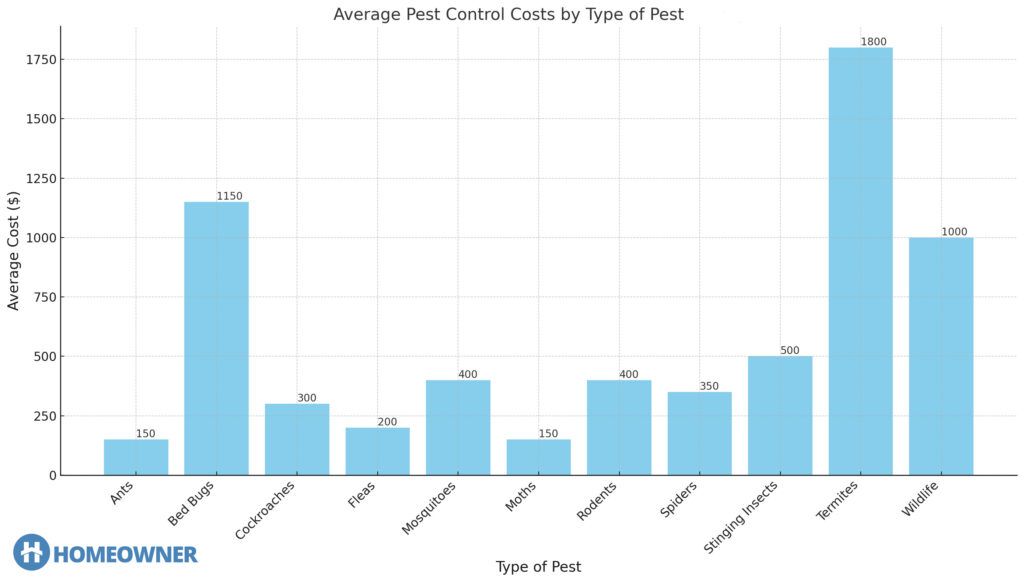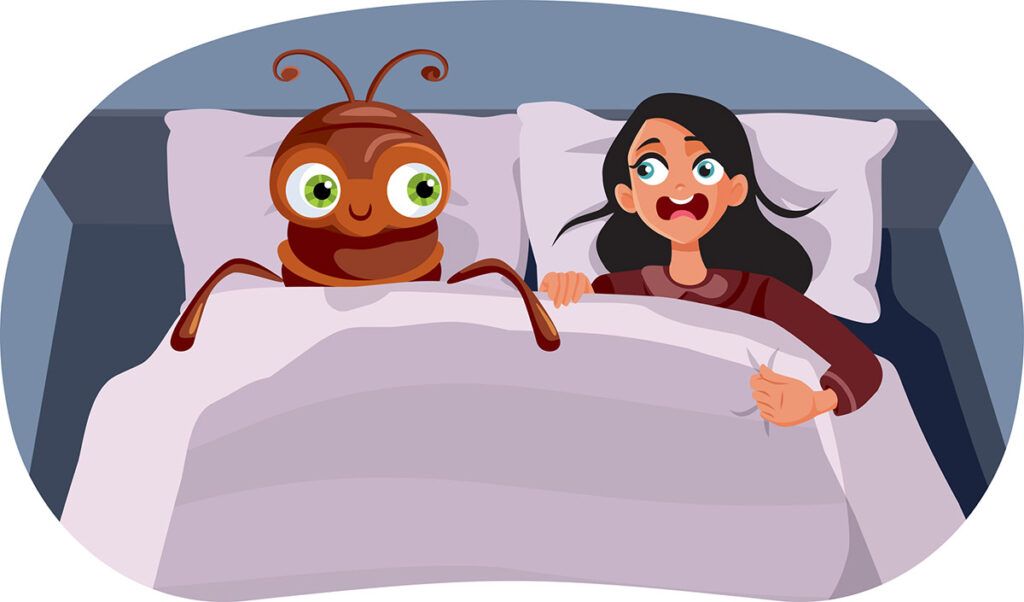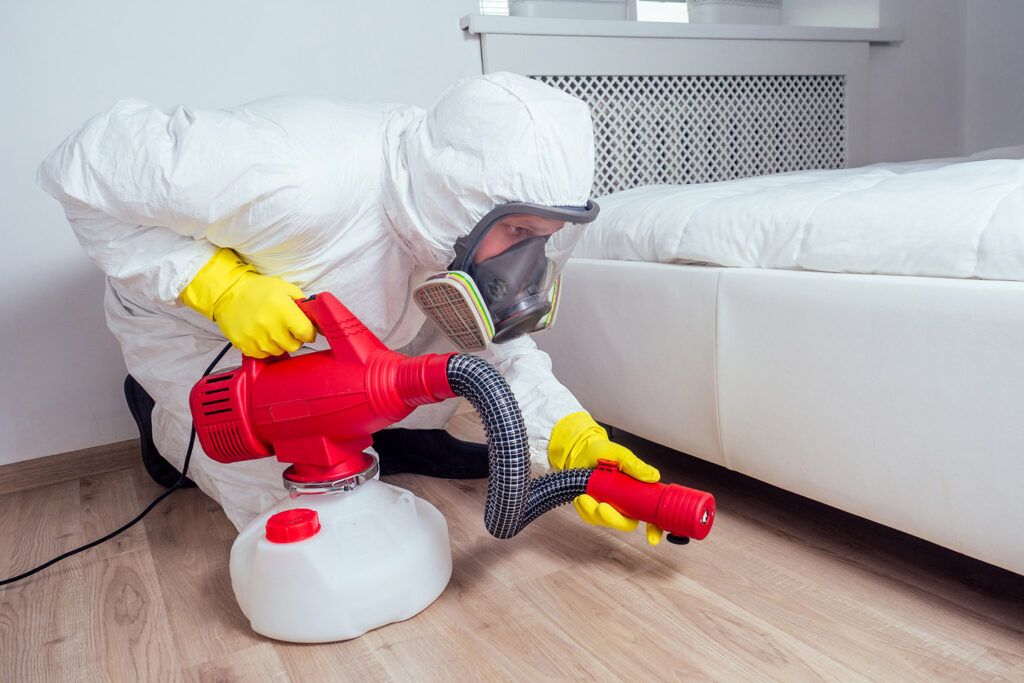How Much Does Pest Control Cost?

When you’re in the market for preventative pest control or a one-time treatment, it’s natural to wonder, “How much does pest control cost in 2025?” The truth is that pest control pricing can vary widely between companies, states, the type of pest being treated, and several other factors. Still, having an idea of the average pest control cost for specific services can help you factor it into your budget.
What Influences Pest Control Costs?
- Type of Pest
- Type of Pest Control
- Location of Your Home
- Location of the Infestation
- Severity of the Infestation
- Extent of Damage Repair After Pest Control Service
- Property Size
- Experience of the Pest Control Company
- Frequency of Service
- Season
10 Factors Affecting Pest Control Costs
There’s no one-size-fits-all solution to pest control, which is why hiring an expert to create a custom pest control plan for your specific situation is the best way to ensure reliable extermination of a current infestation and prevent other common pests from interfering with your yard or home.
Pest control prices can look different from one company to the next, but the following factors usually influence those prices.
1. Type of Pest

A professional pest control company typically handles multiple types of common pests, including moths, wasps, fleas, bed bugs, and termites. However, each of these pests requires different types of treatment, as what works to remove or prevent a mosquito infestation won’t work as a bed bug treatment. In some cases, exterminators may need to spend multiple days treating an infestation, whereas other pest problems only take an hour or two to thwart.
As a result, you can expect prices to vary based on the type of pest problem you have. The table below shows the typical average costs of treating some of the more common types of pest problems homeowners experience, like bed bugs, spiders, and termites.
| Type of Pest | Typical Cost |
| Ants | $100-$200 |
| Bed Bugs | $300-$2,000 |
| Cockroaches | $200-$400 |
| Fleas | $100-$300 |
| Mosquitoes | $300-$500 |
| Moths | $100-$200 |
| Rodents | $200-$600 |
| Spiders | $200-$500 |
| Stinging Insects | $200-$800 |
| Termites | $600-$3,000 |
| Wildlife (Raccoons, Groundhogs, etc.) | $500-$1,500 |
Bed bug treatment tends to cost more than most pests that are easier to treat, like ants, fleas, and moths. Bed bug treatment can be an extremely widespread issue in a home if it’s not controlled well from the start.
Additionally, you can expect to pay higher costs for termite and wildlife removal and treatments, as pest control treatment for these issues usually requires more time and experience to solve the problem.
Note that these cost ranges may be much different than a quote you get from a pest control company, as several other factors come into play, like where you live and whether you have a simple or severe infestation.
2. Type of Pest Control
Pest control companies use various types of treatments for different pests. As mentioned, fumigation may be necessary in cases of severe infestation, and it can be much costlier than spot treatments or laying out traps for ants and cockroaches.
Also, organic and chemical treatment costs can affect how much you pay. If a company pays more to use non-toxic products designed to prevent harm to you and your pets, you can expect they’ll pass some of those costs onto you as the customer. If you’re not picky about the type of chemicals used, you can ask a company about their options, as some offer more affordable products to help you stick to your budget.
3. Location of Your Home
Your home or business’s location can play a role in how much you can expect to pay for pest control, especially if you live in an area with higher chances of infestation for a specific type of pest.
As an example, the table below lists the United States cities with the worst bed bug problems, according to Orkin pest control. We’ve also gathered data from multiple sources to show the typical cost of bed bug treatment in these cities to illustrate how your location can play a role in the amount you spend.
| Top Cities for Bed Bug Treatment | Typical Cost for Treatment |
| Chicago, Illinois | $1,000-$2,500 |
| New York City, New York | $2,000-$5,000 |
| Philadelphia, Pennsylvania | $500-$1,500 |
| Cleveland-Akron, Ohio | $500-$1,500 |
| Los Angeles, California | $1,000-$2,500 |
| Detroit, Michigan | $800-$2,000 |
| Washington, D.C. | $1,000-$3,000 |
| Indianapolis, Indiana | $500-$1,500 |
| Charlotte, North Carolina | $500-$1,500 |
| Champaign, Illinois | $200-$1,500 |
Of course, prices for commercial and residential pest control depend on the type of pest, too. For example, areas that are more susceptible to termite infestations will likely have higher costs for termite control than in cities of the United States where termites aren’t as prevalent.
The following table lists the top U.S. cities for termites, along with typical cost data we’ve gathered to help you compare pest control service costs between cities.
| Top Cities for Termite Treatment | Typical Cost for Treatment |
| Miami, Florida | $2,000-$6,000 |
| Los Angeles, California | $2,000-$4,000 |
| Tampa, Florida | $1,000-$2,500 |
| Washington, D.C. | $1,000-$2,500 |
| Raleigh, North Carolina | $2,000-$6,000 |
| Atlanta, Georgia | $1,500-$4,000 |
| Norfolk, Virginia | $1,000-$2,500 |
| San Francisco, California | $1,500-$3,000 |
| New York City, New York | $1,000-$2,500 |
| Orlando, Florida | $800-$2,000 |
As you can see, the upper limits of some of these cities fall quite a bit higher than the typical costs throughout the United States for pest control for both bed bugs and termites. Because these cities have higher incidences of these pests, you should expect to pay more to exterminate them if you live within their limits.
4. Location of the Infestation
If you’ve seen cockroaches scuttering around your kitchen and bathroom but have yet to find the cockroach nest, you’ll need a pest control expert to locate it. Sometimes, locating the origin location of a pest issue can take time and, therefore, boost the cost of your services.
Even more indicative of a price increase is if your pest problem is in a hard-to-reach spot, like behind a wall. Depending on the type of pest, an expert may need to perform more complex treatments to effectively reach the nest.
Location is an especially important consideration for termites, carpenter ants, rodents, and wildlife, each of which can make their homes in your walls, which requires more extensive treatment or pest removal services.
5. Severity of the Infestation

Some bed bug extermination or mosquito control services don’t need to be as extensive as others because the initial problem wasn’t widespread. For example, a pest infestation located in a relatively small area of your yard probably won’t take as much time to treat as a pest problem spread throughout your entire yard. Similarly, containing bed bugs in just one room is usually an easier problem to solve than exterminating bed bugs in several rooms in your home.
This is why the severity of infestation is one of the most important cost factors pest control experts consider when providing your quote. Pest removal gets a lot more complicated with larger areas, especially for hard-to-treat pests like bed bugs and termites. A complex infestation might require more experts to help, more experience for proper treatment, and more equipment and chemicals to treat the infestation, all of which can increase the amount you need to pay.
On a similar note, you might pay more than your quoted costs if a pest control expert finds that your infestation is more severe than they originally predicted.
6. Extent of Damage Repair After Pest Control Service
It’s important not to only budget for pest extermination but also for the repairs that may need to come afterward. Many pests don’t typically cause damage to your home, but some can. Once pest control experts remove these pests from your home, it’s important to quickly repair any damages caused. Otherwise, you could leave your home vulnerable to the pest’s return.
An excellent example of this is termite damage. Termite treatment can kill off an active termite infestation, but you’ll still be left with damage caused by termites, like tunnels in wood that could affect the structure of your home. Similarly, if you had a family of raccoons in your attic, you’ll want to properly clean the space they were living in and repair entrance points to prevent other wildlife from making your attic their home.
Many residential and commercial pest control companies offer repair services or contract with experts who can repair pest damages. However, damage repair isn’t usually included in an initial quote, as it can be difficult to understand the full extent of damage until an expert begins treatment. In some cases – especially with termite damage – repairs can cost hundreds to thousands of dollars.
7. Property Size
Some pest control services are contained in one area, while others are more widespread. The pest control price to treat a small yard for mosquitoes usually runs lower than the price to treat a massive yard or a large radius around a home.
Similarly, the cost for pest control treatments that need to be completed throughout a home, like widespread fumigation, will depend on the size of the home or treated area. You can expect a whole-home treatment to cost much more than treatment for small bathrooms or just the kitchen.
Pest control companies typically charge by square foot for treatments, as bigger jobs may require more specialists, chemicals, and time. Fumigation can run anywhere from $2 to $8 per square foot, on average, costing a homeowner of a 2,000-square-foot home $4,000 to $16,000 if they need a full home fumigation.
8. Experience of the Pest Control Company
Contracting with a pest control company that’s newer to the industry can be a good way to help fledgling companies and exterminators gain experience and get reviews from their communities. It can also help you save money if you don’t have a severe pest problem and feel confident that less experienced exterminators can solve it.
Like many specialties, extermination relies on experience. The more experienced professionals a company has, the likelier they are to charge higher rates to give you that experience. Someone with 20 years of extermination experience could charge double or triple what a newer exterminator charges, as they’ve likely worked with just about every pest and treatment possible.
But be sure to weigh costs and experience carefully. If you’re dealing with a severe infestation or a particularly troublesome pest, like termites, it might be worth paying extra from the start to get help from a company with a proven track record.
9. Frequency of Service
Most modern pest control companies provide regular pest control services in addition to one-time treatments. These work like subscriptions. You choose a plan, which the company usually charges monthly or annually, and a pest control specialist visits on a set schedule to monitor for pests and apply treatments as necessary.
When you choose your plan, you can typically decide on a frequency that works for you. Opting for a monthly pest control service is going to cost more than a quarterly or seasonal service, but it could be ideal if you live in an area that’s prone to a specific type of pest or just want peace of mind knowing your home is regularly monitored for pests. Just expect to pay for that convenience.
Monthly pest control services cost $50 to $100, on average, while seasonal or quarterly visits usually range from $100 to $300 each. Some companies offer discounts for paying for your plan annually, so it’s worth asking about when you’re ready to subscribe.
10. Season
Spring and summer tend to be the busiest for pest control companies, as these seasons are when many bugs are more active and noticeable in or around homes. Therefore, just like homeowners think of lawn care during these seasons, they may hire a pest control company more readily than they would in the fall or winter.
For these reasons, a company may charge higher rates from March to August, during their busiest period.
Waiting until the end of summer, beginning of fall, or even the dead of winter to hire a pest control company for pest prevention could be an effective way to save some money. Many pest control companies offer discounts from September to February, especially in areas with colder weather in fall and winter, to encourage people to use their services. Look for discounts on their websites or sign up for email newsletters from pest control companies in your area to stay updated on their latest promotions.
DIY vs Professional Pest Control

DIY pest control seems like an excellent idea on the surface. Most DIY pest control treatments seem easy to use and like they could be a quick fix for an active pest infestation or to prevent a pest problem. Plus, it’s usually much cheaper to buy a container of pest control spray or pellets than to hire a pest control company to do it for you.
In some cases, DIY pest control can work, and it might be worth it to give it a try before calling an expert. But when you actively see pests in or around your home, you might already need an exterminator. This is especially true for wildlife removal, which requires expertise for humanely and safely removing animals and repairing damage to prevent a future infestation.
DIY pest control is often best for prevention rather than active extermination. In fact, if you read pest control tips on various websites, you’ll see that they usually center on cleaning and maintenance strategies to prevent pests from invading your space. Regarding a current pest issue, professional pest control is often the best line of defense to quickly control the problem.
Signs You Need To Call an Exterminator
There are a few tell-tale signs that show you have a pest problem. One of the most obvious is seeing pest droppings, insect body parts, or shed skin, which you might find near walls or in cabinets. These indicate that insects are nearby or have been recently.
You might also hear sounds coming from the walls or around rooms. Some insects are noisier than others, and you might be able to hear them, especially when it’s quiet in your home. Rodents and wildlife are usually more obvious with their scratching, whining, and thumping noises.
If you start seeing bugs in your home – like ants around your bathroom or kitchen or roaches invading your pantry – you could already have an extensive problem requiring a pest control company. And, if you’ve already had a problem with that pest in the past, you may need a different type of treatment to remedy it.
The best pest control companies offer free quotes and, sometimes, free inspections to help you get a better understanding of your pest problem and the costs you’ll pay for extermination and prevention. Take advantage of these free services to compare pricing between different pest control companies in your area.